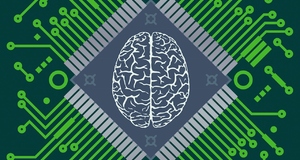Implications of the Split Brain: A Consideration of Nagel
By
2010, Vol. 2 No. 09 | pg. 1/1
KEYWORDS:
In his article “Brain Bisection and the Unity of Consciousness,” Thomas Nagel suggests that the ordinary conception of a unified mind is misled. To support his claim, he turns to data concerning patients whose corpus callosum has been severed. Because the two hemispheres of the brain depend on the corpus callosum for direct communication, the behavior of these patients in specific experimental settings implies two centers of consciousness rather than one. Nagel proposes a series of explanations for this behavior that assume unity of the mind and rejects each in turn. He concludes that these explanations are insufficient because the mind is not a unified, countable entity. In considering the data available to him, Nagel believes he has discovered something regarding an ordinary mind – namely, that it is not a single, unified thing. In Section III, he states that these unusual patients “immediately [raise] questions about the sense in which an ordinary person can be said to have one mind …” (Nagel, 233). While such questions do arise, he is overly optimistic in believing that he has managed to answer such questions based on the experimental data at hand. Nagel fails to consider that the commissurotomy operation constitutes a change so drastic in the brain that it produces a fundamental change in the mind. Consider the analogy of a set of handcuffs. The physical system that constitutes the handcuffs consists of two bracelets connected by a chain. The corresponding conceptual entity is that of a restraining device. If one were to sever or remove the chain from the handcuffs, they would retain the majority of their physical matter and structure, the only difference being that they are no longer connected. The implication for the conceptual identity of the handcuffs is more severe: they would no longer be a restraining device of the same category. One would not say that there are two handcuffs, and even the claim that there are two halves of a set of handcuffs is dubious. A more correct description would be that there are two objects that previously were connected in such a way that they formed handcuffs. The chain that connects the two bracelets is as essential to the conceptual being of the handcuffs as the two bracelets themselves.The mind bears a similar relationship to the brain. The physical system of the brain remains the same after the operation, except for the severance of the connection between the hemispheres. The communication that relies on this connection, however, is an essential element of the mind. Because the mind is housed in the physical system of the brain, the elimination of such a major connection in the physical system not only disrupts the unity of the mind, but changes its very nature. One might object that the two hemispheres appear to continue operating independently as minds, whereas the handcuffs of the analogy are simply destroyed. Further examination, however, demonstrates that the analogy still holds. Having been severed, the two bracelets of the handcuffs continue to be capable of handcuff-like things – they adjust to the size of the object they encircle, they lock at the smallest position they reach, they can be unlocked with the right key, etc. – but that does not mean that they are handcuffs. They used to be handcuffs and still have a degree of the structure they had as handcuffs, which enables them to function similarly in certain situations. Likewise, the two hemispheres of the mind retain the structure they had before the corpus callosum was severed and therefore function in mind-like ways, performing tasks such as identifying and seeking out objects. This does not mean that each one is a mind unto itself. It is true that Nagel rejects the two-mind hypothesis, but he is mistaken in stretching that conclusion to apply to ordinary cases. He reasons that in the case of a commissurotomy, the hemispheres are neither independent minds nor one unified mind, and that therefore they are neither independent nor unified when the brain is undisturbed. On the contrary, the commissurotomy is the source of this confusing relationship between the hemispheres, meaning that the results derived from such cases cannot be applied to brains in which the corpus callosum is intact. There is an important point at which the analogy between the handcuffs and the brain does not hold, which in fact supports the thesis that the mind is a unified entity. In the case of the severed handcuffs, it would be nothing short of astounding if the bracelets were placed on a criminal and they somehow managed to restrain him despite their separation. This is because there is nothing intrinsically unified about the handcuffs. If the physical system is connected, the conceptual entity qualifies as a restraining device and functions accordingly; if the chain is severed, the conceptual nature of the remaining bracelets is no longer unified. The commissurotomy case does not follow this logic. Even after the corpus callosum is severed, the mind of the patient appears to be unified. Nagel observes that the patients function as unified individuals in their day to day lives: All this is combined with what appears to be complete normalcy…when no segregation of input to the two hemispheres has been artificially created. Both sides fall asleep and wake up at the same time. The patients can play the piano, button their shirts, swim, and perform well in other activities requiring bilateral coordination. Moreover they do not report any sensation of division or reduction of the visual field. (Nagel, 233) Despite the severance of a crucial connection in the brain, the mind strives to maintain its unity. Having lost the primary means of communication between the hemispheres, it adapts and finds new ways to relay information between them, making use of a wide range of cues to compensate for the change in the physical system. It has been established that in the case of an ordinary mind, the communication enabled by the corpus callosum plays a crucial role in the unified function of the mind. If the post-commissurotomy mind finds new avenues to perform the same communications, it is only logical that this should be considered unity of the mind. These adaptations are sufficient for the mind to function as a unified object unless “subtle experimental techniques” are used to prevent any interaction between the hemispheres and ensure that they function separately. Nagel even remarks that one of these adaptive methods is “particularly difficult to prevent, because it is so direct” (Nagel, 233). At this point it seems that the experiment has gone to so much trouble to interfere with the mind-brain relationship that it can no longer be considered observation, and yet the mind continues to find ways to maintain its unity in the fact of an active hindrance. If the mind is not a fundamentally unified entity, why is it so difficult for the experiment to segregate the hemispheres when the corpus callosum has already been eliminated? Why does the mind make such a consistent and concerted effort to preserve its singular nature above and beyond the radical changes to the physical system in which it is housed? It seems only natural to conclude that there is something intrinsically unified about the mind that spurs it to make these efforts. Even if there is something to be derived regarding normal minds from this data, Nagel overestimates his findings when he claims to have brought the nature of the mind as a whole into question. The brain bisection experiment addresses divisions in sensory and perceptual attention, but there is much more to be said regarding the mind. Nagel does not provide evidence that the general thought processes of these patients are divided in such a manner. The patients in question contemplate themselves and others as unified minds, make decisions as unified minds, carry on conversations as unified minds, and so on. Nagel mentions that the two hemispheres go to sleep and wake up simultaneously, but his phrasing is misleading – the patient goes to sleep and wakes up as a unified mind. The entire mental life of the patient (including perception!) continues to occur in the context of a unified mind unless one goes to great lengths to create a detailed experimental situation in which this is not possible for them. These objections are insufficient to establish beyond a doubt that the mind is a unified entity. They do, however, cast a shadow on the means by which Nagel reaches his conclusion. It is essential that the study of unusual cases not be taken too casually, for the reasons demonstrated above. While the behavior of a drastically altered brain can be illuminating, it is not the behavior of a normal brain and as a result must not be seen as a parallel. In many cases, brain bisection among them, the degree to which the brain is altered has important implications for how much general knowledge can be gleaned from its study. Nagel makes a number of interesting and worthwhile points in his article, but his conclusion is ultimately beyond the means of his argument. Nagel, Thomas. “Brain Bisection and the Unity of Consciousness.” Personal Identity, Ed. John Perry. Los Angeles, CA: University of California Press, 2008. 227-248. Print. Suggested Reading from Inquiries Journal
Inquiries Journal provides undergraduate and graduate students around the world a platform for the wide dissemination of academic work over a range of core disciplines. Representing the work of students from hundreds of institutions around the globe, Inquiries Journal's large database of academic articles is completely free. Learn more | Blog | Submit Latest in Philosophy |
















